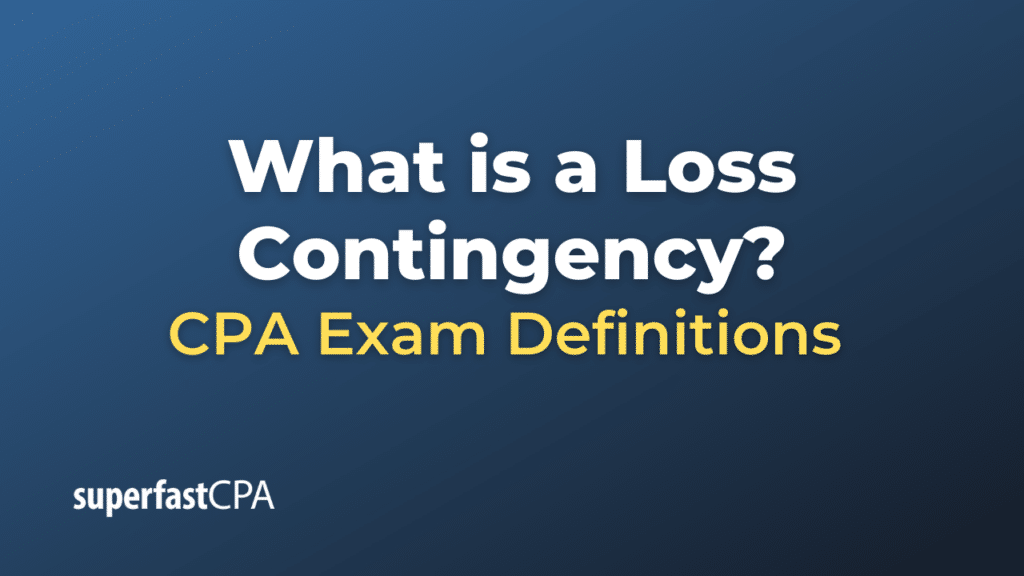Loss Contingency
A loss contingency is a potential financial obligation that arises from past events whose outcome is uncertain but will be resolved by some future event. The accounting for loss contingencies specifically involves potential losses that might come as a result of certain kinds of events.
In accounting terms, a loss contingency is recorded in the company’s books if the management determines that the loss is probable and the amount of the loss can be reasonably estimated. Loss contingencies are typically recorded as liabilities on a company’s balance sheet and as expenses on the income statement.
Examples of loss contingencies could include:
- Lawsuits: If a company is being sued, there’s a possibility of financial loss if the company loses the lawsuit.
- Warranty Obligations: When a company sells a product with a warranty, there’s a potential for financial loss if the product fails and the company has to repair or replace it.
- Environmental Disasters: If a company is involved in an activity that causes an environmental disaster, it could be held liable for cleanup costs, which would be a potential loss.
- Tax Disputes: If a company is under audit by a tax authority and has potential unpaid taxes, this could be a loss contingency.
It’s important to note that not all possible or potential losses are recorded as loss contingencies. Only those where loss is considered probable and can be reasonably estimated are typically recorded.
The guidelines for how and when to record loss contingencies are defined by Generally Accepted Accounting Principles (GAAP) in the U.S., and they may vary by other accounting standards like International Financial Reporting Standards (IFRS). Always consult with a financial professional or auditor to understand how to handle loss contingencies correctly.
Example of a Loss Contingency
Let’s consider an example of a loss contingency related to a product warranty:
A hypothetical company, “AutoTech,” sells high-end electric vehicles and offers a 5-year warranty on each car sold. This warranty covers certain repairs and maintenance that might be necessary within that timeframe.
In 2023, AutoTech sells 1,000 vehicles. Based on past experience and data, AutoTech anticipates that 5% of the cars sold will require warranty-covered repairs in the first year, with an average repair cost of $2,000 per car.
AutoTech would then have a potential loss contingency for the estimated warranty expenses. They would record this as follows:
- Calculate the expected warranty expense: 1,000 cars sold * 5% expected repair rate * $2,000 average repair cost = $100,000.
- At the end of 2023, AutoTech would create a warranty liability on its balance sheet for $100,000, showing they expect to pay that amount in future warranty claims based on the cars sold in 2023.
- AutoTech would also record an expense of $100,000 on its income statement for the 2023 fiscal year, which reduces their net income for the year.
The actual cost in future years could be more or less than this amount. If the actual cost is more than estimated, AutoTech will have to increase its warranty liability and expense. If the cost is less than estimated, then AutoTech would reduce its warranty liability and record the reduction as a decrease in warranty expense.
This is a simplified example. The actual accounting for warranty liabilities can be more complex, including changes in estimates over time and impacts on cash flows. Always consult with a financial professional or auditor for accurate accounting.













